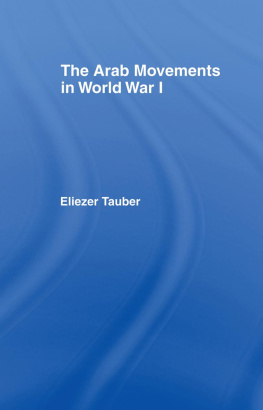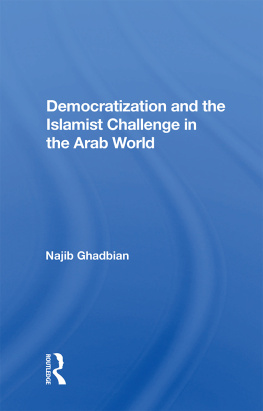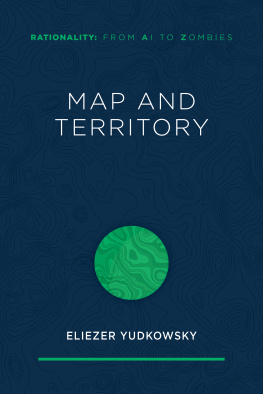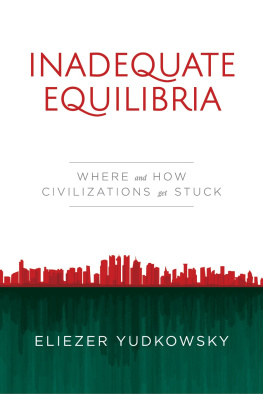The Arab Movements in World War I
The Arab Movements in World War I
Eliezer Tauber
Bar-Ilan University
First Published 1993 by
FRANK CASS AND CO. LTD
Published 2013 by Routledge
2 Park Square, Milton Park, Abingdon, Oxon OX14 4RN
711 Third Avenue, New York, NY, 10017, USA
Routledge is an imprint of the Taylor & Francis Group, an informa business
Copyright Eliezer Tauber 1993
British Library Cataloguing in Publication Data
Tauber, Eliezer
The Arab movements in World War 1.
I. Title
940.415
Library of Congress Cataloging-in-Publication Data
Tauber, Eliezer.
The Arab movements in World War I / Eliezer Tauber.
p. cm.
Includes bibliographical references and index.
1. Arab countriesHistoryArab Revolt, 1916-1918.
2. NationalismArab countriesHistory20th century. 3. Middle EastPolitics and government19141945. I. Title.
DS62.9.T38 1993
909.0974927dc20
91-22138
CIP
ISBN 13: 978-0-714-63437-1 (hbk)
ISBN 13: 978-0-714-64083-9 (pbk)
All rights reserved. No part of this publication may be reproduced in any form or by any means, electronic, mechanical, photocopying, recording or otherwise, without the prior permission of the publisher.
Typeset by Regent Typesetting, London
The Moshe Dayan Center for Middle Eastern and African Studies
The Shiloah Institute
Tel Aviv University
The Moshe Dayan Center, through the Shiloah Research Institute and its other constituent units, seeks to contribute by research, documentation and publication to the study and understanding of the modern history and current affairs of the Middle East and Africa. The Center, with the Department of Middle Eastern and African History, is part of the School of History at Tel Aviv University. This study is published in cooperation with the Center.
Contents
Acknowledgements
I wish to express my sincere gratitude to the Dayan Center of Tel-Aviv University, which has rendered me financial help both at the research stage preceding this book and during its translation into English. Dr. Joseph A. Reif of the English Department at Bar-Ilan University translated this book from the original Hebrew, and my sincere thanks to him are hereby acknowledged. A Foreign and Commonwealth Office scholarship granted me by the British Council made it possible for me to carry out research in various archives and libraries in England in 1987.
A special note of appreciation goes to my mother, whose devotion has long been a source of strength to me.
Eliezer Tauber
Nisan 5751
Bar-Ilan, Israel
Abbreviations
AB = Arab Bulletin
AN = Archives Nationales
Arabie = Levant 19181929, Arabie-Hedjaz
Arbur = Arab Bureau
Cab = Cabinet Office
CCS = Comit Central Syrien
CIGS = Chief of the Imperial General Staff
C-in-C = Commander-in-Chief
Cmd = Command
CO = Colonial Office
CPO = Chief Political Officer
CUP = Committee of Union and Progress
CZA = Central Zionist Archives
d = despatch
DMI, Dirmilint = Director of Military Intelligence
DMO = Director of Military Operations
EEF = Egyptian Expeditionary Force
FO = Foreign Office
FRUS = Papers Relating to the Foreign Relations of the United States
FSI = Secretary to the Government of India in the Foreign and Political Department
GHQ = General Headquarters
GOC = General Officer Commanding
Guerre = Guerre 19141918
HC = High Commissioner
IJMES = International Journal of Middle East Studies
IO = India Office
ISA = Israel State Archives
l = letter
L/P&S = India Office, Political and Secret Departmental Records
MAE = Ministre des Affaires Etrangres
MEF = Mesopotamian Expeditionary Force
memo = memorandum
MES = Middle Eastern Studies
MG = Ministre de la Guerre
NA = National Archives
PA = Papiers dAgents
Palestine = Levant 19181929, Palestine
PRO = Public Record Office
r = report
SSI = Secretary of State for India
Syrie-Liban = Levant 19181929, Syrie-Liban-Cilicie
t = telegram
USS = Under Secretary of State
WO = War Office
WP = Wingate Papers
ARAB SOCIETIES BEFORE THE WAR
World War I was a watershed in the history of the Middle East in general and the Fertile Crescent in particular. For four centuries most of these regions were ruled by the Ottoman Empire, though several countries of the Middle East were loosened from its grip before the war. The process began with Egypt, which for all practical purposes was lost to the Empire with its conquest by Napoleon in 1798, and ended with Libya, which was occupied by Italy in 1911. Yet it was the First World War which finally brought an end to Ottoman rule over the Arab countries, and, in fact, to the Empire itself. After the war, with the capture of the Fertile Crescent by the British army, the boundaries of the modern Arab states were determined, and Syria, Lebanon, Iraq, and Transjordan were established. However, European mandates replaced Ottoman rule, and it was only in a later period that the peoples of the Fertile Crescent obtained complete independence.
The attempts of the inhabitants of the Fertile Crescent to gain some measure of independence began well before World War I. The earliest ideas for Syrian independence emerged during the 1870s. But it was in the period of 19081914, the years of Young Turk rule, that proto-nationalist and nationalist activity noticeably increased in the Arab provinces of the Ottoman Empire, the main cause being the deterioration of relations between Turks and Arabs. The Young Turk revolution in July 1908, which was followed by the promulgation of the constitution and the end of the era of despotism of Sultan Abd al-Hamid II, brought a tremendous wave of exhilaration throughout the Empire. However, the Ottoman honeymoon which followed was over soon after it began. The various nations of the Empire, including the Arabs, expected partnership and equality, but the members of the Committee of Union and Progress (CUP), the leaders of the Young Turks, had other plans. After suppressing an attempted counter-revolution by the supporters of the old regime in April 1909, several of the leaders of the CUP began to put into effect the nationalist ideology that motivated them. They aspired to bring about the assimilation of all the nationalities of the Empire into the Turanian nationality. In their view the Ottoman Empire was a Turkish empire, and all its other peoples should become Turkish, willingly or not. For this purpose they began a process of Turkification of the Empire, and the Arabs saw themselves as its principal casualties. Many Arabs were removed from positions of authority, Arab officers felt discriminated against in the Ottoman army, and the Turkish language became the only language permitted in courts and government offices in the Arab provinces. These Turkish affronts against the Arabs, along with the Empires defeats in 1911 in Libya and in the Balkan War in 19121913, convinced some of the Arab inhabitants that the Turks no longer had the strength to rule over the non-Turkish regions of the Empire. In order to defend the interests of the Arab provinces, Arab activists in Istanbul, in the Fertile Crescent, and outside the Empire established a series of societies, both secret and overt, during the following six years.













